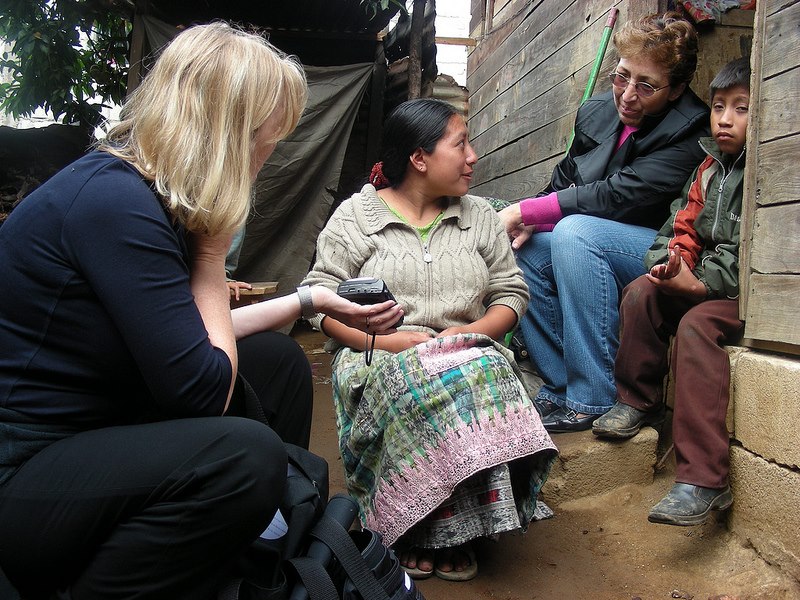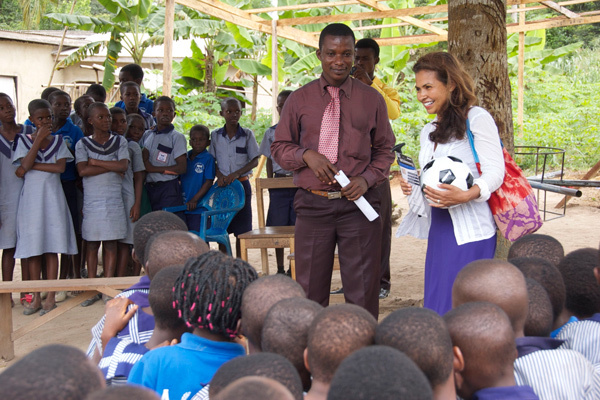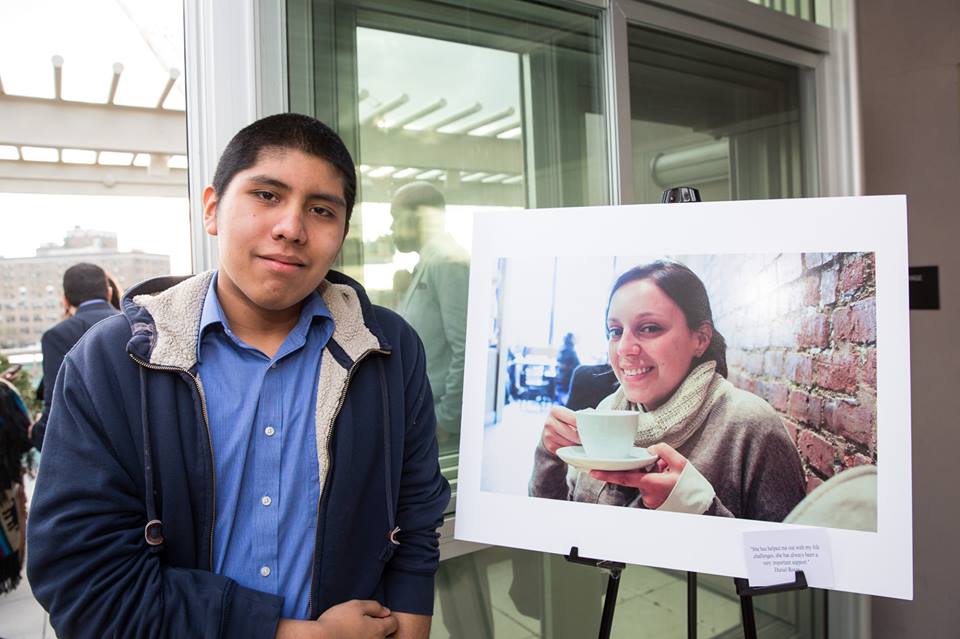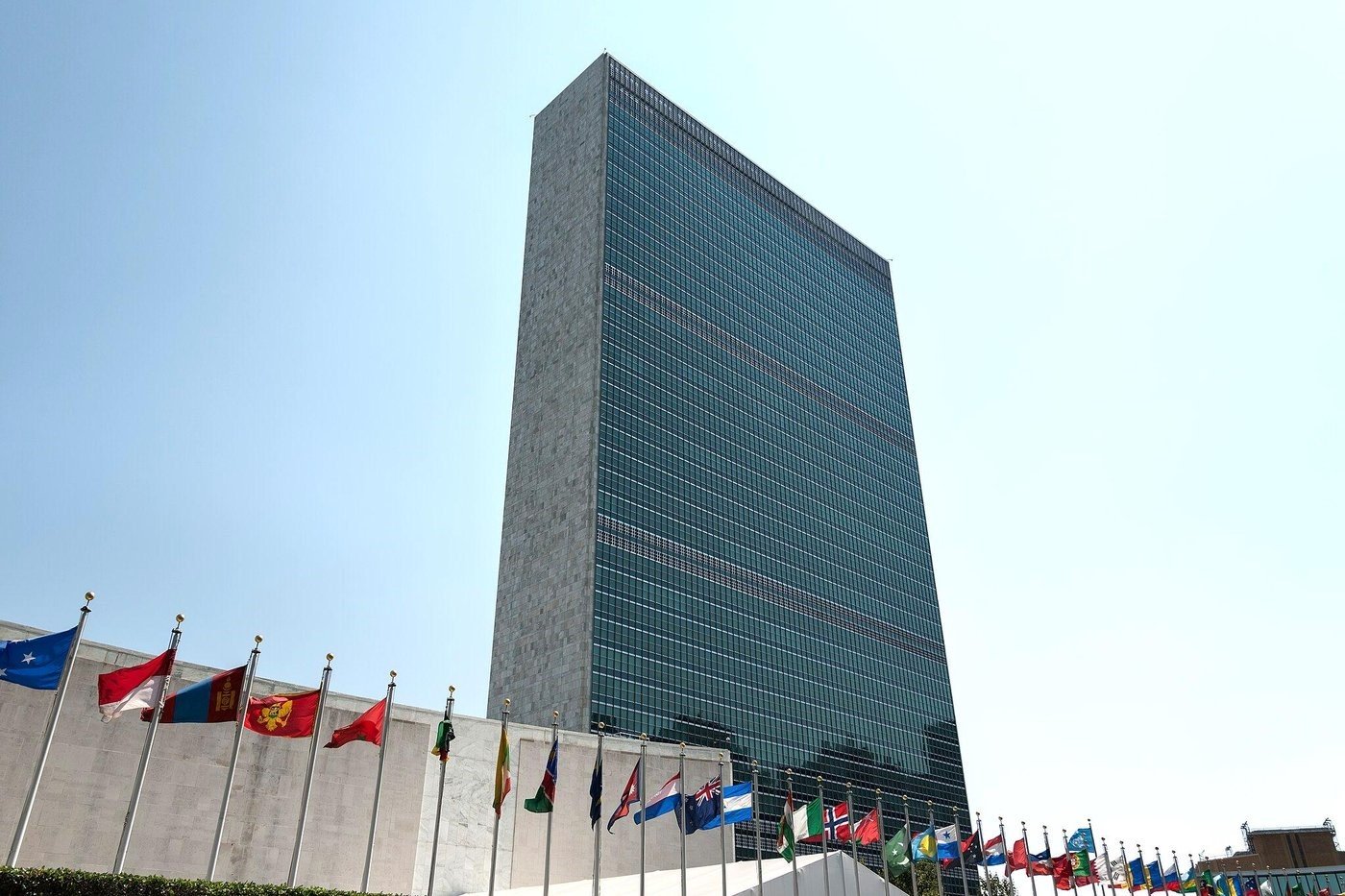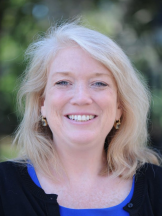
EDITOR’S NOTE: THIS PIECE IS PART OF A SERIES EXPLORING THE SUSTAINABLE DEVELOPMENT GOALS. SEE THE INTRODUCTION TO THE SERIES HERE.
Dr. Mary McKay is the current director of the McSilver Institute for Poverty Policy and Research at New York University, where she has served for 5 years. Prior to becoming director of McSilver, she served as the head of the Division of Mental Health Services Research at Mount Sinai in New York. The McSilver Institute is an award-winning research center dedicated to creating new knowledge about the root causes of poverty, developing evidence-based interventions to address its consequences, and rapidly translating research findings into action through policy and practice.
McSilver aims to create a platform for policy makers, funders, service providers, and community members where poverty is spoken about, the intersection between poverty and race, the focus on structures and systematic barriers that oppress people. Key to McSilver’s platform and in-line with SDG 1, End poverty in all its forms everywhere, is the rapid translation of knowledge into action-actionable policy recommendations and actionable service delivery options. Their work is implemented through community-based multi-stakeholder strategy in an aim at bringing more people to the table to talk about poverty and develop relevant solutions.
EDITOR’S NOTE: THIS INTERVIEW HAS BEEN EDITED AND SHORTENED FOR PUBLICATION
![]()
Impakter: How would you define poverty? Why does it happen?
M.M: In the narrowest sense, poverty can be defined as not having the material resources to take care of your basic needs. So not having enough income to feed yourself and your family, to have some kind of stable housing that lets you sleep out of the elements. That’s the basic definition, but it does not go far enough, in terms of the burdens that poverty overlays on an individual’s and a family’s experience.
Poverty can also be simultaneously coupled with isolation. Doors close in terms of access to information or quality services or healthcare. It’s not that you don’t have enough purchase power, but you have a set of schools that are substandard or don’t provide quality education. Or you have a set of healthcare resources that don’t provide quality care. This closing of doors that goes along with poverty makes not having enough resources even worse—and then there’s also a kind of stigma.
We did some work on a project that we call “Poverty and Shame.” What do we do with populations that struggle with poverty? We stigmatize them. We say, “It’s your fault.” We attribute individual responsibility to a kind of social struggle, and then for many young people that we work with and families, they can’t help but also wonder, “What is it about me that I can’t do the same that we talk about?”
Our group went to a conference where they had all the members sit on the floor. They said, “Now pull yourself up by your bootstraps.” You can’t do that. Even the youngest, most nimblest of us, could not get up off the floor. So this notion that we attribute individual responsibilities to a set of structures and inequities that exist is really very blaming, and it underrides your sense of power and worthiness. I think that that’s intentional. The structures are meant to both close doors, but in lay terms, make you feel bad about your situation. That’s not material. That’s structural. That’s social. That makes a very stressful situation where you are trying to make ends meet even worse.
In a broader context, if you think of this stigma, with respect to policy making, we essentially discount the poor.
M.M: If you really look back at the history of the U.S: our social welfare policies are grounded in something called “Elizabethan poor laws.” Essentially what those poor laws were, were either we lock you up because you’re poor, or it takes a more supportive extent. Those laws and those early policies were around subsistence support, which is not enough really for you to get out of poverty, because in a twisted way, it was thought that it would diminish your work ethic.
You can trace those strands of judgment around poorness and motivation or lack thereof to this day. If you look at financial benefits called “SNAP,” which is the food support program if you experience hunger and food insecurity in the U.S., it’s not enough to feed a family. It’s just enough to take the edge off. Those strands, those laws came from Europe. And, because we’re the U.S, we model things after us, policies get reenacted in countries that really need to give real serious legs up out of poverty. You’ll see all this worry about cash grants—will it disempower the population, make them less motivated to work? The reality is, it’s almost universal. People want to make meaning, and be productive, and contribute. Cash grants don’t make people lazy, but they do feed them while they’re struggling.
Related article: “#SDGSTORIES: LAUNCH OF OUR SUSTAINABLE DEVELOPMENT GOALS SERIES“
Let me take us in a direction that looks at the intersection of race and poverty, because that’s a critically important mission for McSilver. You can’t really talk about stigma, closing of doors to opportunity without understanding that those experiences are completely unevenly distributed in the U.S. and that racism and structural racism are serious issues. You can’t look in any system that serves poverty-impacted people–child welfare, criminal justice, housing and homelessness—and not see disproportionately, people of color in those systems, even though, the disproportionality has nothing to do with the percentage of those actual people in the population. Why is that? Because there are structural blocks to having the same access to both economic opportunities, but also all the things I just talked about: education and healthcare.
There are segments of populations in this country that are truly being marginalized and need additional support and need removal of structures that block them having an equal opportunity to a host of things. Does the concept of race translate to all the places that we are in across the globe? To some extent, yes. The situation on the continent of Africa that I know the best translates to a continent that really within my lifetime, many of the countries were ruled by white, elite, rich people. That righted itself over the course of decades, but the lasting effects, those histories of exploitation, the kind of real systematic holding populations of color down, the legacy of that continues to play into the countries of Africa. There is a heroic effort to try and right those wrongs, but history really matters.
That’s why we are deeply committed to both the work here in New York City with populations of color but also work in country contexts where the history of oppression really existed, and there needs to be some real serious progress addressing that.
Photo Credit: McSilver Institute
In regards to how the McSilver Institute operates and how you are getting stakeholders together, including NGOs, local community members, researchers—this aspect is considered key to achieving to achieving the SDGs. By contrast, regarding the pitfalls of the Millennium Development Goals (MDGs) that preceded the SDGs, often times the lines of communication between different stakeholders were inadequate. How did you develop this framework, how did you get everyone talking together?
M.M: This is an intentional approach. The kind of value commitment and intentionality around who are the key stakeholders that need to be our full partners in this process—that is a process baked into McSilver now. We have written a lot of academically-oriented articles to guide investigators to be intentional about who sits at the table as you begin to scope out a new initiative or a new project. There’s also a lot of challenges that you refer to in this process because these stakeholders are not used to being in the same room.
They often don’t communicate well—academics can be full of jargon, but so can program developers, funders, and community members. Your ability to facilitate real communication across groups is really important. The other piece that I think deters a lot of people from bringing groups together is because people have different perspectives based on their different social location. Inevitably, it brings up a set of misunderstandings and in many cases, real serious conflict.
Partnership and collaboration take time and effort. We find that in our research the extra effort is worth it. Why? If we develop a program in collaboration with youth, young people come to that program. Adolescents are terribly challenging to involve in programs and services. The last thing they want to do is to get supported within their high school, but a program designed by young people, aligned with their needs and interests, you’ll see participation rates in droves. The same is true for our global work, and it’s probably even more important with those partnerships.
What you do not need are U.S-based investigators and academics coming out and telling other investigators, or worse yet, community members, what they need or don’t need. You have no preparation for what is likely to be aligned with the perspectives of young people, families, and communities. If you think you do, you would be wrong. What you do as the academics, as those who know the science, what you know has worked within your own context, but how to align or reject that knowledge is really up to the stakeholders in each one of the places that we are going to go.
Do you have any examples of areas that you’ve seen, where communities start to break down the structures of injustice and start to rebuild a structure that works for everyone?
M.M: I think in South Africa, which I know the best, the dismantling of an apartheid system was huge. Nelson Mandela the first President really attempted to create a South African society where people can live together, I think that has been nothing short of heroic in terms of what’s been happening in South Africa.
Having said that, social inequities continue to exist — the residuals of unequal school systems continue to exist. The inability of a country held down by poverty—they were very slow to address the HIV epidemic, and that has everything to do with both resources and but also stigma—the stigma of apartheid and now here’s another kind of epidemic that’s impacting the country. You see countries like Uganda trying to leave behind an oppressive government and put together more voices within a government and represent the people. I think there are legacies of poverty in countries and oppressive government regimes that sometimes fuels corruption, sometimes scarcity mentalities, and I think that it’s very complicated, and you have to be careful how you write about that, because that can sound blaming.
You have to be really careful about corruption in Africa—assigning individual responsibility as opposed to looking historically and structurally around how people are set up. In the West and many other countries, we intentionally or unintentionally contributed to some of the inequities. It gets very complicated when you’re setting millennium goals to figure out how we all contribute positively, but also how to figure out if self-interest is guiding some of these decisions and what those are.
That’s why partnership, communication and collaboration is so important because single voices and single solutions are often guided by a combination of good intent, but may not always think about the consequences and could be guided by self-interest. The partnerships are trying to protect from that, listening to different voices are one protection for that.
In the Photo: Step Up participant presents his photography. Step Up’s Photovoice project uses photographs to monitor and identify issues in young people’s communities. Photo Credit: Katy Littwin Photography
What challenges are unique to poverty in urban settings in comparison to rural settings in your experience? What kind of issues are at play in both?
M.M: What you are seeing across the globe is this push towards economic opportunities that exist in urban centers. What is that all about? For example, we have a new study that we are working on with our colleagues in Ghana, we work in a number of countries that have very high rates of child labor. Young kids, even as young as nine or ten, traveling to urban centers by themselves trying to eat, make a living, and help support their families. This kind of rural to urban migration particularly around children but also other populations is a worldwide phenomenon.
It’s not only that there’s not access to basic material needs but also opportunity for less. What might have existed generations ago around farming and an agriculturally-based economy, with population growth and climate change, those become less and less viable options to be able to exist in rural areas. The kind of pull to a city to be able to take advantage of what looks like a powerful economic set of opportunities is pretty great except the populations traveling to cities find the city is a pretty harsh life too but in different ways. Your ability to afford housing and goods and communities is less, not more because it’s more expensive in cities.
For example, young women who go from the rural parts of Africa to the bigger cities find economic opportunities, such as a group of girls that carry loaves of bread on their head and sell small items on the street, but they also live and sleep on the street and then are incredibly vulnerable to victimization. They are unaccompanied as children without adult protection, making complicated choices, so their safety is compromised. I think they’re both pretty harsh, I think some context matters with consequences of poverty that vary from rural to urban centers, but it’s all pretty harsh, and I think that you’ll see more and more proportions of our population exposed to the harshness of urban centers as we go forward.
Can you talk about the intersection of poverty and health? I know that’s a lot of research you have some experience in.
M.M: I’ll broaden it to both physical health and behavioral health-Poverty sets up a set of conditions where it is harder to maintain your physical health and your behavioral wellness, and your emotional and behavioral health. What are those conditions? High levels of stress, lack of access to healthy and nutritious food, lack of access to safe and secure communities, all undermine your physical wellness, what you put in your body completely defines your biology in some ways, what you breathe in terms of toxins define the biology of your physical wellness.
But also exposure to multiple traumas and chronic stress undermine your emotional well being and so the conditions that poverty creates undermines kids and their families’ physical health and emotional wellness. But it also goes the other way. If you have a vulnerability, a chronic health condition, a more serious mental issue, your ability to access good quality care that helps you manage that chronic condition whether that be serious diabetes or more serious mental issue is key. Your ability to access quality care will make or break your ability to make a living.
If I have a mental health issue and I don’t get the right treatment, then I’m much less likely to be able to maintain my job and maintain my active involvement in the work. If I have a health condition and my employer can’t flex my hours and provide additional support so I can go to my doctor’s appointment, I’m much more likely to lose my job and end up in poverty, and so I think that bi-directional set of relationships that go along with poverty and health and behavioral health or emotional wellness is really important for us to pay attention to.
I think we have very little understanding that if we don’t attend to kids’ behavioral health issues, they will be economically more challenged. For kids, anywhere from 1 in 5 in the U.S and up to 40% across the world are struggling right now with a serious behavioral health challenge. Not meeting those challenges puts them on a trajectory where seeking employment that will bring them out of poverty and achieving all the milestones needed to get employment like doing well in school, takes those kids out of the game. I think more and more you’re seeing nationally and for sure locally where we are in New York City. A reinvestment in behavioral health but also around the globe is needed; understanding those issues are not a nicety, those issues are critical to the economic survival and thriving of the whole population.
Recommended reading: “GLOBAL INCOME INEQUALITY WILL DECLINE”
_ _


